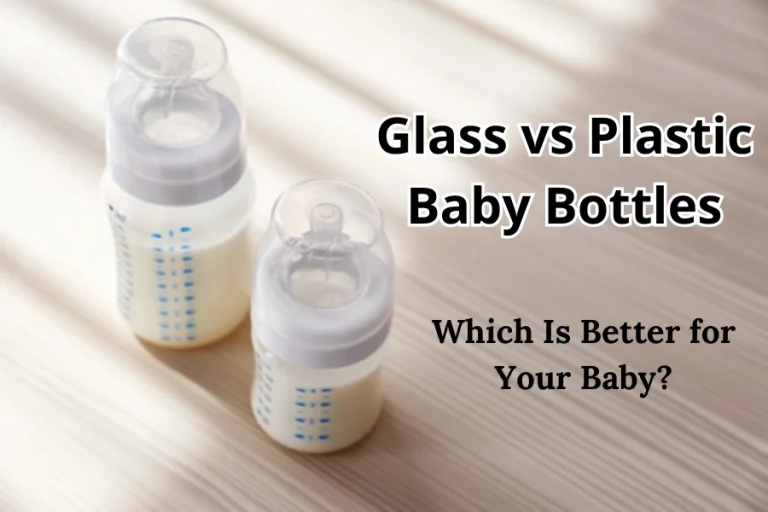
It can be challenging to collect a urine sample of a baby for a test. Babies can not pee “on demand” like big children. But in some cases, your baby needs to take a urine test to know whether he or she has a UTI – Urinary Tract Infection or not.
To make a baby go to pee, the parents need to master some techniques. In this article, we will bring you the 2 best methods of “How to make a baby pee”. Maybe it is difficult but with the right methods, you can manage this. These 2 ways allow you to take the clean babies’ urine samples without hurting them. Learn more about “How to make a baby pee” by continuing to read.
Why Does A Baby Need To Take A Urine Test?
A baby may need to take a urine test for several reasons, such as to diagnose a urinary tract infection (UTI) as well as to monitor kidney and bladder function.
Urine tests can tell much about the overall health conditions of a baby. It hence helps the doctors to detect the problems at the earlier stages and treat them accordingly. Urine tests can help doctors look for or measure several things, including 1:
- White blood cells, which can occur with an infection
- Bacteria/ Germs
- Glucose
- Blood
- Protein
- Ketones
- The pH level of urine
- The urine’s concentration
- Bilirubin, which is created when red blood cells break down
How To Make A Baby Pee? 2 Effective Methods

How to make a baby pee? There are a couple of ways to take pee from a baby. But in this part, we will introduce 2 best methods that don’t hurt or make your baby feel uncomfortable. They are Clean-catch & Quick-wee methods.
Clean-Catch Method
The doctor will give you a sample container to catch the baby’s urine. You need to give the baby something to drink, such as breastfeeding or water. Your baby will wee within an hour or so. The detailed instructions for you to follow are listed below:
- Take off your baby’s diaper
- Gather all necessary supplies, including sterile baby wipes, clean gauze, a clean container, and gloves.
- Thoroughly wash your hands before collecting the urine sample.
- Wear gloves
- Lay the baby on a clean surface. Use sterile baby wipes or gauze to clean the areas surrounding the genital area. You can use a plastic tweezer to clean
- Wait and keep watching so that you will be ready to collect the pee sample. When the baby starts to urinate, then quickly position the container to catch the urine midstream. This helps reduce contamination. Remember to keep the container far away from the skin of the baby to prevent any contamination by bacteria.
- After collecting enough urine amount, close the container tightly and give the sample to the doctor.
Quick-Wee Method

The technique, known as the ‘Quick-Wee,’ was created by Dr. Jonathan Kaufman and his colleagues from Murdoch Children’s Research Institute. Quick-Wee will enable clinicians to collect a urine sample quickly, gently, and with minimal equipment in very young patients aged 0-1 year.
In this method Quick-Wee, you will try to rub the lower abdomen of the baby (or suprapubic cutaneous skin area) with a small piece of gauze, which is already soaked in cold liquid. Because the massage activates the skin’s nerves, it causes cutaneous voiding reflexes, which in turn causes urine. You will need to do this in a few minutes.
Quick-Wee is three times more efficient than the traditional method of Clean-Catch. The standard ‘Clean-Catch’ needs to wait for a child to urinate, which can take up to one hour and has a larger risk of contamination.
Other Methods To Get Baby Urine Samples
How to make a baby pee? Besides 2 best methods mentioned above, some others can be applied as below:
Bag Specimen
This is a kind of special bag that will be attached to the skin to collect the urine. Generally, this method should not be used when looking for UTIs. This is because bacteria from the skin often get into the bag and urine.
Catheter
A catheter is a tube that a nurse or doctor inserts through the urethra into the baby’s bladder. This way, there will be fewer germs from the skin in the sample. This method is good if there is not much urine in the bladder and a sample of urine needs to be collected. However, the baby can feel threatened, and they may not want to stay fixed in one position when it is put in place.
Suprapubic Aspirate (SPA)
To do this SPA method, a doctor will use a needle and put it into the bladder (through the lower abdomen’s skin) to draw out some urine. SPA is the safe and cleanest method. However, the baby will be painful due to needle use. As parents, you may not want to apply this method to your baby. SPA is just used in some special circumstances when other methods can not help.
Final Words
Quick-Wee and Clean-Catch are the 2 best methods that can help to show your problem “How to make a baby pee?”. To obtain the pee sample without inflicting any harm on the infant, you only need to remain composed, exercise patience, and employ the right methods.
Source
- Professional, C. C. M. (n.d.-b). Urinalysis. Cleveland Clinic. https://my.clevelandclinic.org/health/diagnostics/17893-urinalysis ↩︎






